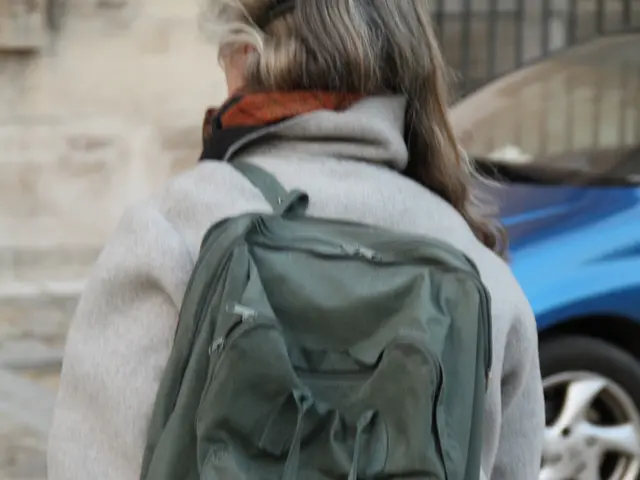Switzerland Tests Rail Tracks Equipped with Solar Panels for Train Powering
Unused Railway Space Turns Green: Solar Energy Arrives Between the Tracks
Embrace sustainability, Swiss-style! A rising star in Switzerland's tech scene is placing bets on a unique location for renewable energy production - the space between railway tracks. In a bold move, Sun-Ways, a Swiss startup, has set up shop in Buttes, a tiny village in western Switzerland, with the help of a pilot project worth Rs 6.04 crore (approximately 585,000 Swiss francs).
And it all started with a simple idea, sparked by Sun-Ways founder, Joseph Scuderi, while waiting for a train in 2020. After receiving the green light from the Federal Office of Transport (FOT), Sun-Ways has set up 48 solar panels on a 100-metre stretch of railway tracks, currently managed by transN.
"We've installed these solar panels just as if they were on the roof of a house," Mr. Scuderi shared with Swissinfo. He admits that getting this far has been nothing short of miraculous.
Initially, the FOT shut down the project in 2023 due to concerns that the solar panels might interfere with train safety and maintenance. But Sun-Ways wasn't deterred. The startup enlisted experts to conduct a thorough independent study, ultimately demonstrating that the specialized solar panels would not compromise the active railway.
What sets this project apart is that Sun-Ways has developed a proprietary technology that enables the solar panels to be removed whenever maintenance is required, ensuring minimal disruptions to rail operations. Scheuchzer, a Swiss track maintenance company, can handle more than 1,000 square meters of solar panels in just a few hours.
As for the envisioned uses of the solar power generated, the company presents three scenarios. The first suggests re-injecting the energy into powering the rail infrastructure such as switches, signals, and stations. The second option involves feeding the power into the nearest local electricity network. However, Sun-Ways believes the third option - reinjecting the power into the traction energy network - offers the biggest benefits, capable of generating 1 billion kWh of solar power per year for the roughly 5,320 km of the Swiss rail network, potentially powering 300,000 homes.
Florence Pictet, FOT spokesperson, notes, "It's great to see rail and public transport companies innovating, including in the production of renewable energy."
Intrigued by this project, countries like China and the US have shown interest in replicating it, with collaborative projects already underway in South Korea, Spain, and Romania.
A Promising Solar Venture: A Closer Look
Advantages
- Untouched Opportunities: Railway tracks contain vast, undiscovered spaces ripe for solar power generation, eliminating the need for expensive land acquisition and minimizing environmental impact.
- Innovative Technology: Sun-Ways has developed a modular system that makes it easy to install and remove solar panels, maintaining harmony between the railway industry and sustainable energy production.
- Versatile Energy Application: The electricity produced can be used for powering rail infrastructure, feeding into the local power grid, or even fueling trains, enhancing overall efficiencies.
Efficiency and Output
- Capacity: The current pilot project boasts a capacity of around 18 kilowatts and is projected to generate 16,000 kilowatt-hours annually.
- Durability: Preliminary data shows that the panels can withstand high train speeds and storms, underscoring their adaptability for operational railway environments.
Challenges
- Maintenance Complexities: Despite the innovative installation system, managing solar panels in a rail setting may pose unique logistical challenges due to the specialized equipment needed for maintenance.
- Cost and Scalability: While promising, the initial investment costs are high, and widespread adoption would require significant capital investment to fully capitalize on this innovative approach to sustainable energy production.
- Switzerland's Sun-Ways startup, innovating with solar energy, has transformed unused rail space between tracks into a source of renewable energy, a move praised by Florence Pictet, FOT spokesperson.
- The solar panels, installed as if on house rooftops, have proven compatible with active railway operations, addressing initial concerns raised by the FOT.
- The specialized solar panels, designed to be removable for maintenance, are now being studied and replicated in countries such as China, the US, South Korea, Spain, and Romania.
- With its modular system and varied energy application options, this solar venture, located between the tracks in Buttes, stands as a promising example of environmental-science and technology integration for sustainable rail transportation.




